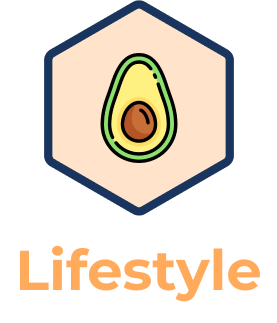
🎯 Aim to eat at least 25g of Fibre Per Day.
🗓️ This experiment lasts for 7 days.
🙂 Improved Digestive Health: Consuming more fiber can promote a healthier digestive system by preventing constipation and supporting regular bowel movements. It also reduces the risk of conditions like diverticular disease and hemorrhoids, as fiber adds bulk to stool, making it easier to pass.
✊ Gut Health Support: Fiber promotes a healthy gut microbiome by serving as nourishment for beneficial gut bacteria. A balanced and diverse microbiome is linked to various health benefits, and fiber contributes to its maintenance while reducing the risk of gastrointestinal disorders like IBS and IBD.
😌 Anti-Inflammatory Properties: Many types of dietary fiber, particularly soluble fiber found in foods like oats, beans, fruits, and vegetables, have demonstrated anti-inflammatory properties. These fibers can reduce the production of inflammatory molecules in the body, helping to mitigate chronic low-grade inflammation.
🤸♂️ Balancing Blood Sugar: Fiber can help regulate blood sugar levels by slowing down the absorption of glucose (sugar) from the digestive tract. This can prevent spikes and crashes in blood sugar, which can trigger inflammatory responses in the body.
🦵 Joint Health: Inflammation is a hallmark of many types of arthritis, such as rheumatoid arthritis. While dietary fiber alone may not cure arthritis, a diet rich in anti-inflammatory foods, including fiber, can help manage symptoms and reduce the overall inflammatory burden on the body.
🌾 Opt for whole grain bread, pasta, and rice, and try whole grain cereals or oatmeal for breakfast to increase fibre intake.
🫘 Incorporate beans, lentils, and chickpeas into soups, salads, and stir-fries, and consider making bean-based dishes like chilli or bean burgers.
🥥 Enjoy a handful of almonds, walnuts, or pumpkin seeds as a snack and sprinkle chia or flax seeds on yoghurt, oatmeal, or salads for added fibre.
🍌 Include fruits or vegetables with every meal and keep their skins on when possible, as they often contain more fibre. Broccoli, Cauliflower, Sweet potatoes, Kale, Spinach, Bell peppers, Strawberries, Blueberries, Raspberries, Banana, Kiwis, and Avocado are examples of fibre-rich foods.
Please note that the recommended amount of fibre per day for adults can vary slightly depending on factors such as age, gender, and specific dietary guidelines. It’s important to note that individual dietary needs may vary, and some people may require more or less fibre based on their specific health conditions, activity levels, and calorie intake. Additionally, pregnant and breastfeeding women may have different fibre needs.
DISCLAIMER: Health experiments are meant as a fun way to build consistent, healthy habits and are not intended to constitute a substitute for professional medical advice. Always seek the advice of your doctor or other qualified healthcare provider with any questions you may have regarding a medical condition. Never disregard professional medical advice or delay seeking it because of something you have read on the Bearable app or Bearable website. Bearable is not liable for any acts, decisions, or omissions you make.